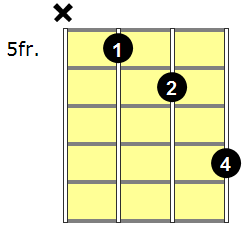
For example, we can have C E G E G C, or any other arrangement that our instrument allows. We can duplicate any of the notes to make the chord fuller sounding. Play them all at the same time (or even one after the other) and we have the chord of C major. Let's take a closer look at the formulas for major, minor, major 7th, 7th and minor 7th chords. Sometimes considered as an inverted sus4 (GCD) The 11th is often omitted to avoid a clash with the 3rd. Often used in preference to 11th chords to avoid the dissonant clash between 11 and 3

The 3rd is often omitted to avoid a clash with the 11th Minor chord with 6th major scale note addedĬhords extended beyond the octave are called 'added' when the 7th is not present. Major chord with 6th major scale note added Named after the major 7th interval between root and 7th major scale note

Named after the minor 3rd interval between root and b3 Named after the major 3rd interval between root and 3 The major scale is by far the best known of all the diatonic scales that's why it's the only one used for this purpose. Any 'diatonic' scale would work just as well, but all the formulas would be different. The chord tones don't actually come from the major scale or any scale it's just a handy and familiar yardstick for applying the chord formulas. Note* Referring to the major scale as a way to find the chord tones is purely a convenience. That tells us which notes to select (or modify) from the scale.

Next, we have to know the formula for that type of chord.So for any chord with C as the root, we need to know the scale of C major.

Refer to the notes of the major scale that corresponds with the root.As you probably know, when a chord is major, we usually drop the word major and just call it by its root name, (Bb in this case).įinding the root note is easy enough as it's always given, but in order to know which notes are specified by the second part of the name, we have to do two things: In the chord Bb major, the root is the note Bb ( B flat) and the chord type or quality is major. Similarly In the chord, F# minor 7th, the root is the note F# ( F sharp) and the second part, minor 7th, is the type of chord. For example, in the chord, C major 7th, the first part of the name (i.e., the root) is C and the second part (the type of chord) is major 7th.


 0 kommentar(er)
0 kommentar(er)
